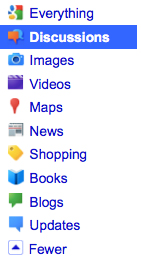This article will help you write copy to sell something, even if you’ve NO IDEA why people would want to buy it in the first place! Read on for some tips:
You’re probably aware that to sell something, your copy HAS to resonate with the reader. You MUST solve your readers’ problems and offer fantastic solutions.
BUT if you have limited knowledge on a subject, problems can occur. If you’re writing about something you don’t personally need it can get tricky, even if you’re an article-writing guru or a copywriting master.
I’ve personally been in this situation. I needed to sell a service but I had never used it. I didn’t even know why people would need to use it!

So, what did I do?
I applied my technique, which I’ll share with you now:
How to put others’ experiences in your copy:
This blog post will show you where to find other peoples’ experiences to work them into your own copy. These techniques will allow you to connect your writing to your readers. You’ll be solving their problems, giving them reasons to buy and hopefully closing in on the sale.
So, let’s get started:
Visit Google and type in your keyword, product or thing that identifies your niche. I’m going to do this now, pretending that my problem product is ‘luxury hand cream’.
Next, visit the left of Google’s page where you’ll see a ‘more’ button. Click this and then a box full of links (like those on the right) will open up. Click on ‘discussions’ to see your search performed in forums and Q&A websites. You can even filter discussion posts by the last hour, day or week to find really topical information. Click ‘all time’ to find the most popular, influential discussions.
Tip: Read as many discussions as you have time for: skim read and note down common problems people are having or questions that are being answered.
Look deep into the discussions for ‘benefits’ to work into your copy. I suggest writing things in a note pad as you’re skimming from post to post.
Now, use these real, human experiences to help you sell!
Here’s what I found about luxury hand cream after a couple of searches:
- Factors a good cream will have
- Fragrance, advice on smells of different creams
- What’s best to use for really dry hands
- Phrases, language and style used in discussions
- What’s considered a ‘good’ ingredient / what’s bad
- Great benefits of using luxury hand creams
- Common problems experienced by cream-users
By now, you should have a similar list. So, it’s time to work all of these into your web copy or article.
Use the information you’ve just researched to make your copy sell.
How to make your copy sell using your research:
Here are my top three tips, follow these and you’ll notice a difference to your conversions:
- Take care to use similar language/words to those used in the discussions
- Make sure you write about how YOUR product solves any common problems you’ve noted
- Use your research to pin point unique selling points and highlight these in your copy
Follow these and you’ll have a more interesting, engaging piece of copy, geared up for selling.
A few final tips:
Try tapping in keywords about your service/product, and if applicable, any other words like ‘problems’, ‘help’ and ‘ideas’ into Google. Think about what potential buyers would search for. E.g. somebody looking to BUY luxury hand cream may ask for ideas or advice in a forum.
![]()
Affiliate bloggers: use these tips to make more money!
I think this is a great method of copy writing that affiliate bloggers/shop owners could really benefit from. If you’re into affiliate marketing, make sure you research your products using my methods and use your findings to boost your copy!
 Some more places to try:
Some more places to try:
If you’ve pumped the forums dry, try searching on these websites too:
- Yahoo Answers (and other Q&A sites)
- Twitter (and other microblogging sites)
- Facebook (and other social networks)
- Online groups and communities
- Social media websites like Digg, Delicious and Reddit
- Search blog posts and comments too.

